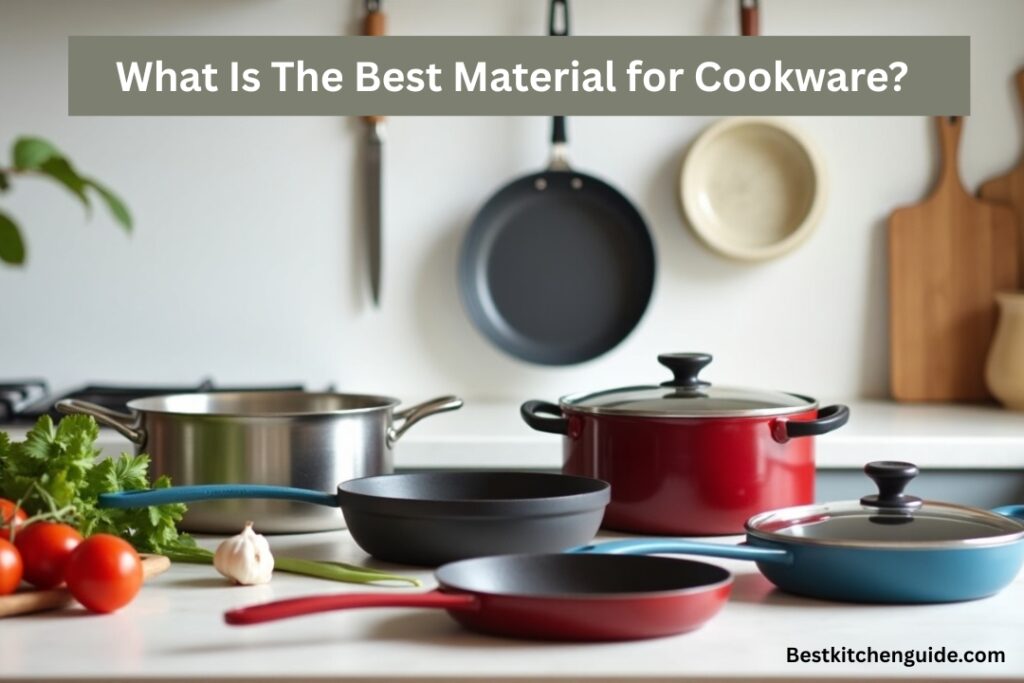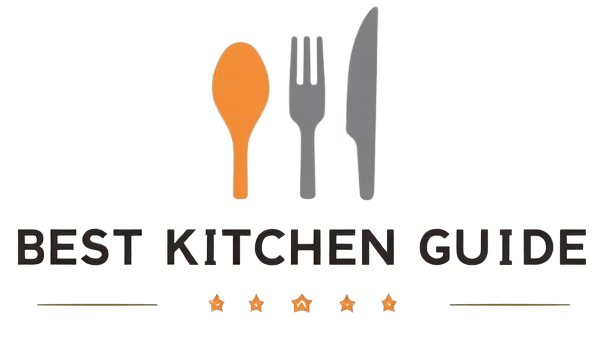Find the best material for cookware and learn how each option—like stainless steel, cast iron, and ceramic—handles heat and cooking tasks.

What is the best material for cookware? That question matters more than you might think when building a functional kitchen.
Choosing the right cookware isn’t just about style or price—it’s about performance, durability, and how much you’ll enjoy the cooking process.
The right cookware can transform your cooking experience. It affects how heat spreads, how flavors develop, and how easy cleanup will be.
Whether you’re simmering a delicate sauce or searing a perfect steak, the material of your cookware plays a crucial role in your results.
Imagine cookware that heats evenly, releases food effortlessly, and lasts for years with minimal upkeep. Each material offers unique strengths and trade-offs, from stainless steel to cast iron, non-stick to copper.
Understanding them means you will cook smarter, tastier meals every time.
This guide will explore the pros and cons of the most popular cookware materials.
Whether you start from scratch or upgrade your collection, you will gain the confidence to choose the perfect tools for your kitchen.
For more kitchen related guide visit us now-Best Kitchen Guide.
Every material has a different relationship with heat. Some hold onto it longer, others respond faster to temperature changes, some are easier to clean, and some need special care. The right combination of the best cookware materials can transform your kitchen into a place of creativity and efficiency.
Key things cookware material affects:
A smart kitchen setup combines different materials for different purposes. Let’s explore these in depth.
Stainless steel is a go-to for most home cooks and professionals alike. It is strong, durable, and non-reactive, meaning you can cook acidic ingredients like tomatoes and wine without worry.
Pros
Cons
Best Uses
Pro Tip
Tri-ply stainless steel (steel with an aluminum or copper core) gives the best balance of even heating and durability.
Maintenance
Let the pan cool before washing. Use non-abrasive cleaners for stuck-on food.
Cast iron is beloved for its ability to retain heat. It stays hot long after being removed from the burner, which is perfect for searing or baking.
Pros
Cons
Best Uses
Pro Tip
Avoid cooking acidic foods (like tomato sauce) until your pan is well seasoned.
Wash by hand, dry immediately, and apply a thin layer of oil.
Carbon steel combines the best parts of cast iron with easier handling. Because of its versatility, it is often used in professional kitchens.
Pros
Cons
Best Uses
Maintenance
Season regularly, keep dry, and oil lightly after use.
Copper is prized for its responsiveness — no other material lets you control heat so precisely.
Pros
Cons
Best Uses
Maintenance
Polish regularly; use lined copper for safety.
Anodized aluminum has been treated to make it harder and more durable.
Pros
Cons
Best Uses
Maintenance
Hand wash for longevity.
Non-stick cookware makes specific tasks far easier. It allows for low-fat cooking and easy cleanup.
Pros
Cons
Best Uses
Maintenance
Use silicone or wooden utensils; hand wash gently.
This material gives cast iron heat retention without the hassle of seasoning.
Pros
Cons
Best Uses
Maintenance
Avoid metal utensils, and do not shock with cold water while hot.
Entry-Level
Mid-Range
Premium
| Material | Heat Retention | Responsiveness | Weight | Maintenance | Price | Top Uses |
|---|---|---|---|---|---|---|
| Stainless Steel | Medium | Medium | Medium | Low | $$ | Sauces, searing, boiling |
| Cast Iron | High | Low | Heavy | High | $ | Frying, baking, roasting |
| Carbon Steel | High | Medium-High | Medium | Medium-High | $ | Stir-fry, searing, crepes |
| Copper | Medium | Very High | Medium | Medium | $$$$ | Sauces, candy, delicate foods |
| Anodized Aluminum | Medium | High | Light | Low | $$ | Sautéing, frying, general use |
| Non-Stick | Low | Medium | Light | Medium | $$ | Eggs, pancakes, fish |
| Enameled Cast Iron | High | Low | Heavy | Low | $$$ | Stews, braises, oven dishes |
The best cookware material depends on your cooking style, budget, and willingness to maintain it. For most cooks, the ideal kitchen consists of a mix of materials: a stainless steel skillet, a cast iron or carbon steel pan for searing, a non-stick pan for eggs, and perhaps an enameled cast iron Dutch oven for braises.
Choosing wisely means your cookware will last years — even decades — and help you get the most out of your time in the kitchen.
Stainless steel, cast iron (when seasoned properly), enameled cast iron, and high-quality ceramic-coated cookware are considered among the best cookware materials for health. These materials are non-reactive or have safe, durable coatings that do not leach harmful substances into your food when used correctly.
No cookware is 100% perfect in every situation, but stainless steel, enameled cast iron, and high-quality ceramic non-stick pans are among the safest choices. They are non-reactive, free from harmful chemicals (such as PFOA and PTFE in the case of ceramic non-stick), and do not release toxins under normal cooking conditions.
Cookware that is not harmful includes stainless steel, enameled cast iron, glass, and ceramic-coated pans (when free from dangerous chemicals). These materials are non-reactive and safe when used as intended. The key is to avoid damaged non-stick coatings or poorly manufactured aluminum cookware that may leach metals.
Aluminum cookware is generally safe when anodized or coated, as these treatments prevent the metal from reacting with food. Pure, uncoated aluminum can react with acidic foods (like tomato sauce), which may affect taste and cause slight leaching. Choosing anodized aluminum or aluminum with a safe lining (such as stainless steel) is a better option.
The main disadvantage of ceramic cookware is durability. Ceramic coatings can wear down over time, especially if used with metal utensils or at very high heat. Once the coating degrades, its non-stick performance declines, and it may not be as safe or effective as when new.
Many professional chefs recommend a mix of cookware materials to suit different tasks. Stainless steel pans for searing and sauces, carbon steel or cast iron for high-heat cooking, copper for precision tasks, and non-stick pans for eggs and delicate foods. Chefs focus on performance, durability, and ease of control.
To pick the best cookware:
Invest in quality where it counts — good cookware lasts for years

Whether you’re selling or staying, everyone can get something out of a kitchen update. Learn why we consider this renovation the Most Valuable Project of 2025 and how to stay on budget.

Hi, I’m Kyler Halvorson—a home kitchen advisor dedicated to helping beginners create simple, efficient kitchens. I share practical tips and tools to help you cook with confidence from day one.
Best Kitchen Guide offers expert tips and product reviews to simplify your cooking experience. From cookware to appliances, we help you build a smart, efficient kitchen.

Best Kitchen Guide offers expert tips and product reviews to simplify your cooking experience. From cookware to appliances, we help you build a smart, efficient kitchen.
Copyright 2025 Best Kitchen Guide, all rights reserved .